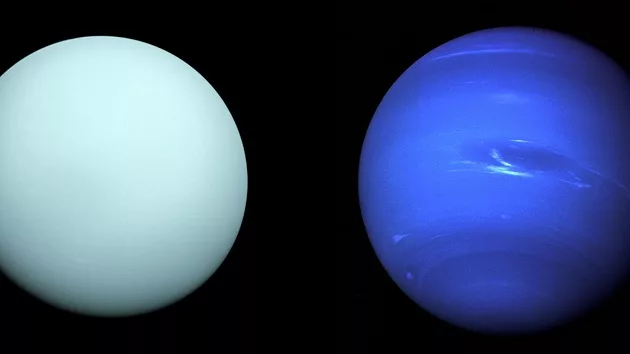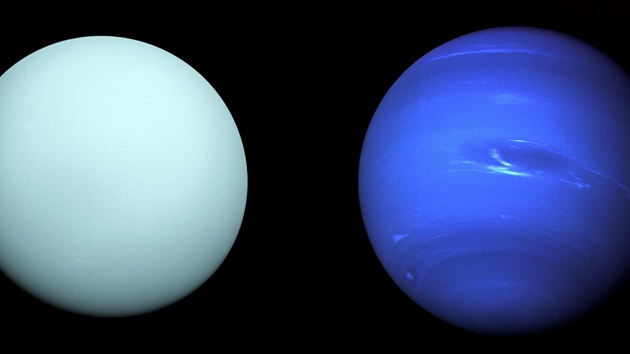
(NEW YORK) — NASA is asking amateur astronomers to help the agency study the ice giants Uranus and Neptune.
Next month, NASA will be observing the two planets via its New Horizons spacecraft, originally designed to explore Pluto and the Kuiper Belt, a disc of icy bodies beyond the orbit of Neptune and often a source of comets.
Working with the Hubble Space Telescope, New Horizons plans to capture images of Uranus and Neptune in color. Because the spacecraft has passed the orbit of both planets, the images will be taken from “behind,” which should provide some data regarding the atmosphere on both planets.
Even though NASA is working with some of the most advanced tools in the world, the agency says having multiple instruments aimed at Uranus and Neptune could help “augment” the mission.
“By combining the information New Horizons collects in space with data from telescopes on Earth, we can supplement and even strengthen our models to uncover the mysteries swirling in the atmospheres of Uranus and Neptune,” said Alan Stern, principal investigator of the New Horizons mission, in a statement.
“Even from amateur astronomer telescopes as small as 16 inches, these complementary observations can be extremely important,” the statement continued.
NASA said it will make the Hubble images of Uranus and Neptune publicly available at the end of September. The New Horizons images will likely be received at the end of 2023, at which point they will also be made available.
Amateur observers are being asked to share their images, as well as the details they identified, on Facebook or X, the platform formerly known as Twitter, with the #NHIceGiants.
The images are important, especially because only one spacecraft has ever visited Uranus and Neptune.
In January 1986, NASA’s Voyager 2 reached Uranus after traveling 1.8 billion miles over nine years. It took three years for Voyager 2 to pass Neptune as it made its way out of the solar system.
Planetary scientists have studied planets such as Mars intensely due to its proximity to Earth, but some have argued that more resources need to be poured into studying the more distant planets.
Dr. Kathleen Mandt, a planetary scientist at Johns Hopkins University’s Applied Physics Laboratory, published an article in the journal Science earlier this year calling for a probe dedicated to studying the ice giants, exploring “how Uranus formed; how much it migrated after formation; the planet’s interior structure, atmosphere, magnetosphere, and ring system; and whether any moons have or once had subsurface liquid water oceans.”
NASA did not immediately reply to ABC News’ request for comment.
Copyright © 2023, ABC Audio. All rights reserved.






